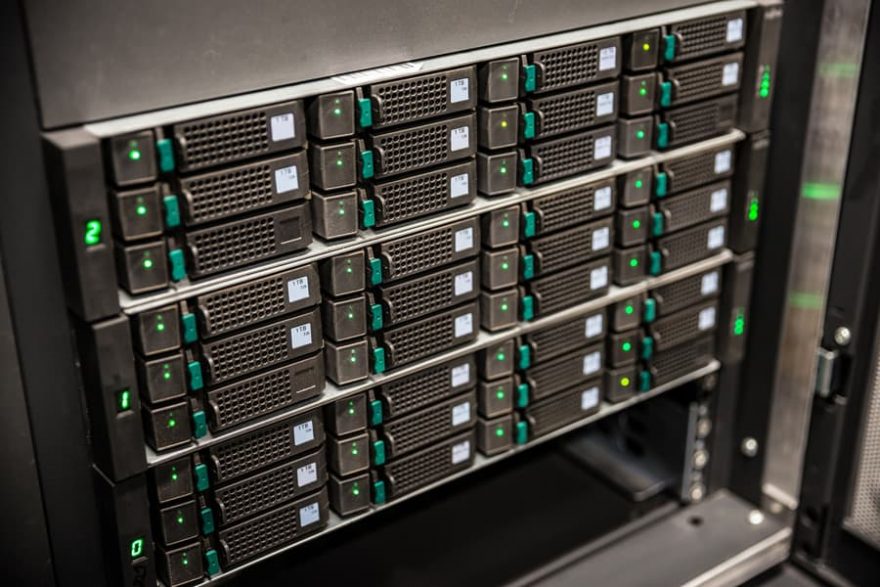1. Introduction
Nowadays, more and more companies are deciding make a migration of servers to the cloud, and this is due to several factors. Firstly, if we evaluate the economic factor, we can take as reference the estimate based on the TCO (Total Cost of Ownership). Here we compare the costs of the data center, infrastructure, licensing, maintenance and operation.
In a large part of the cases, companies believe that the cloud is more expensive, which in a comparison that is based on having the hardware purchased and not accounting for things such as its maintenance, the backup that must be had, or the amortization that the components suffer, makes the result unrealistic.
With this in mind, how can we evaluate and conclude that the cloud is the best option for our servers? Performing the following comparison:
1.1 Data center
The hardware that we have on premise must be housed in a cage or rack, which depending on the size may have a high cost. Additionally, for large servers, cooling must be taken into account, which adds to this equation not only air conditioning equipment but also the energy cost of both the server and the cooling.
On the other hand, the cloud does not have these costs, not for end users such as companies in this case. The migration of servers to the cloud allows us to eliminate the 100% of the investment in the data center.
1.2 Infrastructure
The hardware of a server is not cheap at all, CPUs, RAM, storage, etc. It is an investment that a priori, if we already have the server, we have already made, but to this is added having backup hardware for any failure and the deterioration inherent to the passage of time, causing us to be forced to periodically have to renew and therefore invest in hardware.
Additionally, as our needs grow we will have to minimally increase storage space, and probably also increase processing capacity.
On the other hand, these costs in the cloud are greatly reduced. Starting at the end, we do not have to worry about hardware wear and tear, loss of value over time, or having backup for technical failures, since the provider takes care of all of this.
Furthermore, if we want to update, clouds like Google's allow us to increase the capacities of the servers we have deployed in a few clicks, increasing the cost but only the difference between what we had and what we expanded.
1.3 Licensing
All the software we have is licensed, this is the only point where having our servers on premise can be beneficial, but we will see that in the aggregate it does not make a difference.
In the cloud, depending on which one, the cost may vary, but generally it is a little higher than local licensing.
1.4 Maintenance
Server maintenance is another very important point, whether we have our own team, or as happens in many cases, we hire an external company to take care of these tasks.
This point is another clear differential of the cloud, having a 24/7 support from Google or even from a partner like uCloud It makes the cost much lower, and even more so taking into account that since everything is remote we will never depend on a technician to travel to the data center facilities.
1.5 Operation
Being able to use the server, keep configurations and updates up to date, and be able to resolve any issues is an important part. So we must also have a team for these tasks.
This last task is also reduced, since with less staff more servers can be managed, but how is this? Everything that Google Cloud offers is optimized, and allows, either through the interface or console, to have accessible and simple control of everything we have deployed.
1.6 Training
By having everything locally, our team, if they want to train, must acquire external courses that prepare them to use the applied technologies.
With the 5 points mentioned above we can now make a fair comparison between the costs of an on-premise server and one in the cloud.
2. Challenges
Migrating to the cloud can be a more or less complex task depending on the size of our servers, the particular needs we have and the knowledge that our team has of the cloud.
To reduce this friction, providers like Google offer both a team of Customer Engineers and certified partners to accompany you in this process.
Always in the first instance, the on-premise infrastructure and particular requirements it may have are evaluated, not only in hardware, but also in operating systems, networks, firewalls, etc. With that in mind, the servers are set up in the cloud and the migration is carried out by taking a snapshot of the on-premise servers.
It is also necessary to take into account when to carry out this migration, it is normally carried out on a day and time of low traffic so that in the event that any inconvenience occurs, the impact on the solution is as minor as possible.
Again, the complexity of the migration process goes hand in hand with the size and requirements of the servers. The important thing is that with the correct knowledge, planning, execution and testing, the transfer can be achieved without failures and effectively.
3. Solutions implemented
From uCloud For all migration tasks we have a standardized process that allows us to execute quickly and without errors.
![]() We always start by meeting with the client to evaluate the current infrastructure, software they use, what type of databases they have and any details that include server operations.
We always start by meeting with the client to evaluate the current infrastructure, software they use, what type of databases they have and any details that include server operations.
![]() With this in mind, we proceed to the equivalent sizing in Google Cloud, looking for the tools that best adapt to the needs and with the best cost-benefit ratio. As part of this there is also the optimization of the tools used, such as automating the shutdown of servers during times that are not used.
With this in mind, we proceed to the equivalent sizing in Google Cloud, looking for the tools that best adapt to the needs and with the best cost-benefit ratio. As part of this there is also the optimization of the tools used, such as automating the shutdown of servers during times that are not used.
![]() Once this diagram is made, we proceed to execution planning, determining the best time to carry out the migration, the team that will participate and how long it will take.
Once this diagram is made, we proceed to execution planning, determining the best time to carry out the migration, the team that will participate and how long it will take.
![]() Within the migration process we take into account the configuration of the organization in the cloud, which entails a series of tasks that we have as a standard of good practices for all our clients.
Within the migration process we take into account the configuration of the organization in the cloud, which entails a series of tasks that we have as a standard of good practices for all our clients.
![]() Finally, once the migration has been carried out, tests are carried out to check that everything is working correctly and not only the Google Cloud console with all the operational servers is delivered to the client, but we also attach the step-by-step documentation that we did.
Finally, once the migration has been carried out, tests are carried out to check that everything is working correctly and not only the Google Cloud console with all the operational servers is delivered to the client, but we also attach the step-by-step documentation that we did.
4. Results achieved
The first result is the reduction in fixed costs, since everything used in the cloud was calculated, measured and optimized. In addition, you have the peace of mind that everything is scalable, so in just a few clicks and especially in a short time, as demand grows you can increase the capacities of the servers.
Another factor that is widely differentiating is that one no longer worries about power or internet service outages, resulting in the company being able to rest assured that its servers will always be operational.
Security is another important factor, Google Cloud offers the same security for all its clients, and not as a negative aspect, but on the contrary positive, since it is the maximum security for everyone equally, thus ensuring that the data center is covered from any possible incidence. In addition, there are specific tools to strengthen this, and of course at uCloud we offer them and recommend them to our clients.
Finally, within the availability is the ability to have a load balancer, thus making traffic management easier and with the possibility of ensuring correct operation.
5. Conclusions
The cloud is no longer the future, but the present, and being up to date with technologies is of utmost importance, even more so in a world where it is constantly growing and in many aspects of daily life. Having on-premise servers for small businesses, where it is a PC with a few hard drives, can be useful, but when it scales to a little more than that, migrating goes from being useful to being necessary. Costs, maintenance, amortization, availability, are determining factors in a server, and in each and every one of these the cloud is a clear winner.
Changes are never easy, there is an entire ecosystem behind the servers and work methodologies that have been within organizations for years, but as part of the evolution and constant advancement of the world we live in, migrating to the cloud is necessary , and luckily providers like Google and partners like uCloud make this process much simpler, thus reducing any possible friction that may exist to a minimum.



